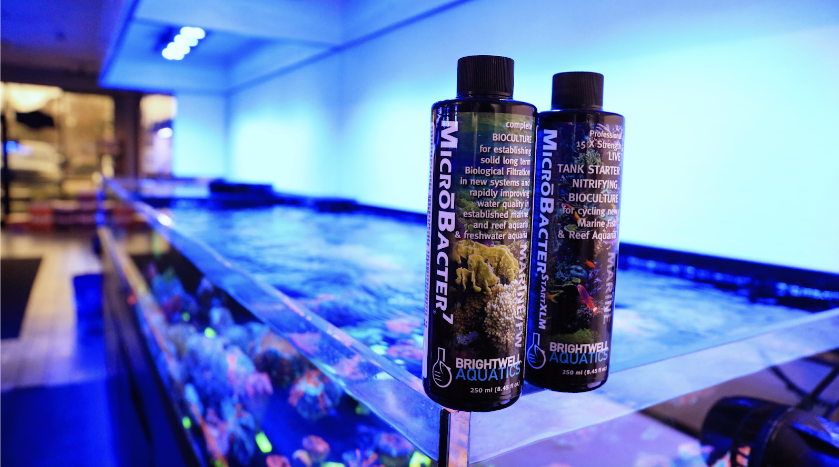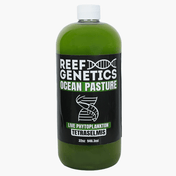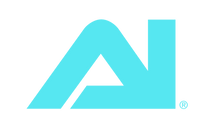If you have ever looked at your reef tank and noticed the water looking hazy or milky, you know how frustrating it can be. A cloudy marine tank takes away from the beauty of your display and can also be a sign that something in your system is changing. In some cases, it is a harmless short-term event. In others, it can put your fish and corals at risk.
For many reef keepers, this seems to happen overnight. One day the water is crystal clear, and the next it is cloudy enough that corals look muted and fish are harder to see. Most of the time, this is the result of a bacteria bloom, which is when microscopic organisms multiply rapidly in the water column. These blooms often clear on their own, but they can also lead to oxygen depletion and other stressors if they are not addressed quickly.
In this guide, we will cover:
-
What cloudy water means in a saltwater aquarium
-
How bacteria affect both healthy and unhealthy systems
-
The most common reasons for water turning cloudy
-
How to fix the problem and prevent it from returning
Whether you are facing saltwater aquarium water cloudy conditions for the first time or want to avoid them entirely, this step-by-step guide will help you restore clarity and keep your reef thriving.
What “Cloudy Water” Really Means in a Saltwater Aquarium
Cloudy water in a marine tank is almost always the result of something suspended in the water column. In most cases, it is caused by microscopic bacteria, algae, or particles that are too small for your filtration system to remove quickly. The degree of cloudiness can range from a light haze to water that is so milky you can barely see from one side of the tank to the other.
It is important to understand that not all cloudy water is the same. A light haze that appears in a new setup may be part of the normal cycling process. On the other hand, a sudden thick bloom in an established tank can point to a disruption in the system, such as a spike in nutrients or a change in water chemistry.
The most common cause of a cloudy marine tank is a bacterial bloom. This happens when certain bacteria reproduce rapidly, often due to an abundance of food sources like dissolved organic matter. These blooms are common in both new and mature systems, and while many will clear on their own, others can persist and cause stress to fish and corals.
Knowing the difference between harmless temporary cloudiness and a potentially harmful bloom is key. The next section will explain the types of bacteria found in marine aquariums so you can better understand which are beneficial and which can cause problems when they grow out of balance.
Understanding the Types of Bacteria in Your Tank
Bacteria are a vital part of every saltwater aquarium. Without them, the nitrogen cycle would not exist and fish, corals, and invertebrates would not survive. While most bacteria are beneficial, some can become problematic if their population grows out of balance.
Below are the main categories of bacteria you will encounter in a marine system:
Beneficial Bacteria
These are the bacteria that make a healthy reef possible. They process waste, break down toxins, and help keep the water stable.
-
Nitrosomonas – Converts toxic ammonia from fish waste and decaying organics into nitrite.
-
Nitrobacter and Nitrospira – Convert nitrite into nitrate, which is far less toxic and can be used as a nutrient by corals and algae.
A stable population of beneficial bacteria helps keep harmful substances from building up in your tank.
Heterotrophic Bacteria
These bacteria feed on organic matter in the water. They can be divided into three groups:
-
Parasitic – Harmful species that can cause disease in fish and invertebrates. A notable example is Vibrio bacteria, which can cause skin lesions, ulcers, and infections.
-
Saprophytic – Decompose organic waste like uneaten food, fish waste, and dead plant matter. These are generally harmless in balanced numbers but can trigger a bloom if there is too much food available.
-
Symbiotic – Form mutually beneficial relationships with other organisms, such as nitrogen-fixing bacteria that work with macroalgae to improve nutrient cycling.
When Bacteria Become a Problem
Under normal conditions, bacteria are balanced and support the health of your reef. Problems arise when an excess of organic matter or other imbalances cause certain bacteria to multiply rapidly. This is when you start to see cloudy marine tank conditions that can lead to reduced oxygen, blocked light, and stress for your livestock.
In the next section, we will look at the main causes of cloudy water so you can pinpoint what triggered the bloom in your own aquarium.
Main Causes of Cloudy Water in Saltwater Aquariums
A cloudy marine tank can happen for several reasons, but most come down to an imbalance in your aquarium’s ecosystem. Identifying the root cause is the first step toward clearing your water and keeping it clear.
Here are the most common causes:
-
Bacterial Blooms: The leading reason for saltwater aquarium water cloudy conditions. Blooms occur when microscopic bacteria multiply rapidly due to excess dissolved organic matter. This often happens in new tanks but can also follow heavy feeding or a livestock loss in established systems.
-
Overfeeding: Uneaten food breaks down into nutrients that feed bacteria. Even small amounts of leftover food can spike nutrient levels and cause cloudiness.
-
Poor Water Quality: High nitrates and phosphates from waste buildup encourage bacterial and algae growth, which can keep your water hazy.
-
Inadequate Filtration: An undersized or clogged filter will not remove fine particles and dissolved organics effectively, allowing suspended matter to accumulate.
-
New Tank Syndrome: During the early stages of a tank’s life, beneficial bacteria populations are still forming. Water clarity may fluctuate as microorganisms compete for resources.
-
Disturbed Substrate: Stirring up sand or gravel during cleaning or aquascaping can release trapped detritus and fine particles into the water.
In the next section, we will cover practical prevention methods to keep your water clear and your livestock healthy.
How to Prevent Cloudy Water
The best way to deal with a cloudy marine tank is to avoid it in the first place. Preventative care keeps your system balanced and reduces the chances of sudden water clarity issues.
Here are proven steps to help keep your water clear:
-
Practice Careful Feeding – Feed only what your fish and corals can consume in a few minutes. Remove any uneaten food before it breaks down and adds to the nutrient load.
-
Perform Regular Water Changes – Routine changes dilute excess nutrients, export waste, and help maintain stable water chemistry.
-
Maintain Proper Filtration – Keep mechanical filters clean, ensure your protein skimmer is tuned and working efficiently, and replace chemical media as needed.
-
Test Water Parameters Consistently – Regular testing for nitrates, phosphates, and ammonia helps you catch problems early before they lead to cloudy water.
-
Avoid Overcrowding – Too many fish in a system increases waste production and nutrient buildup. Stock your tank within a manageable bioload.
-
Stir Substrate Carefully – When cleaning sand or gravel, work slowly to avoid releasing large amounts of detritus into the water at once.
-
Use a Refugium or Macroalgae – These natural nutrient exporters can help keep nitrates and phosphates in check, reducing the fuel for bacterial blooms.
Following these prevention practices will make it much less likely that you will encounter persistent saltwater aquarium water cloudy conditions. If you still experience cloudiness despite good maintenance, it may be time to move to active treatment methods.
How to Treat Cloudy Water
Even with great maintenance habits, a cloudy marine tank can still happen. When it does, the key is to address the root cause while also restoring water clarity.
Here are the most effective treatment methods:
-
Perform Larger Water Changes – A series of 20–30% water changes over several days can dilute excess nutrients and remove suspended particles.
-
Run a UV Sterilizer – UV sterilizers are highly effective at killing free-floating bacteria and algae in the water column, often clearing up cloudiness within a few days.
-
Use Chemical Filtration – Activated carbon or other chemical media can help remove dissolved organics that feed bacteria.
-
Add Beneficial Bacteria – Introducing bottled nitrifying bacteria can help reestablish a stable bacterial population and outcompete nuisance strains.
-
Improve Aeration and Oxygen Levels – Running an air stone or adjusting powerheads can help maintain oxygen levels, which can drop during a bacterial bloom.
-
Reduce Feeding Temporarily – Give the system a break from heavy feeding to slow bacterial growth and lower nutrient input.
In most cases, these treatments will restore clarity within a few days to a week. If your saltwater aquarium water cloudy problem persists beyond that, there may be an underlying issue such as a hidden source of decay, a malfunctioning filter, or a severe imbalance in your tank’s microbiome.
Next, we’ll look at the potential impact cloudy water can have on your fish and corals so you know when to act quickly.
Effects of Cloudy Water on Fish and Corals
Cloudy water in a saltwater aquarium doesn’t just affect appearance — it can also create real stress for the animals in your care. While mild cloudiness caused by harmless bacterial blooms often clears on its own, more severe or prolonged cases can lead to health issues.
One of the biggest concerns is reduced oxygen availability. When bacteria populations surge, they consume oxygen that fish, corals, and other livestock rely on. If oxygen drops too low, it can cause labored breathing, stress, and in extreme cases, fatalities. Running a protein skimmer, increasing surface agitation, or using air stones can help restore healthy oxygen levels.
Cloudiness can also reduce light penetration. Photosynthetic corals, clams, and macroalgae depend on clear water to capture enough light for energy production. A dense bloom can shade these organisms, slowing growth and weakening their overall health.
In some rare cases, certain bacteria produce toxins that can irritate or harm livestock. While this is not common in home aquariums, it’s another reason to address persistent cloudiness rather than letting it run its course.
Other possible impacts include:
-
Increased stress — Cloudiness changes the visual environment, making fish more skittish or aggressive.
-
Disease susceptibility — Stressed animals are more vulnerable to infections, especially if pathogenic bacteria are part of the bloom.
By understanding these risks, you can decide when it’s safe to monitor the situation and when quick intervention is needed to protect your tank’s inhabitants.
Conclusion
A cloudy marine tank is one of those problems every saltwater aquarist will likely encounter at some point. While it can look alarming, most cases of saltwater aquarium water cloudy conditions are manageable when you act quickly and understand the underlying cause.
The real key is balance. A healthy bacterial community keeps your system stable, while sudden surges — whether from overfeeding, new tank syndrome, or excess nutrients — can tip that balance toward cloudiness. Prevention is always easier than correction, so keep up with water changes, feed responsibly, and maintain strong filtration.
If a bloom does happen, remember that clearing the water is only half the job. Addressing the root cause is what will prevent it from coming back. That might mean upgrading your filtration, reviewing your feeding habits, or improving water flow.
In the end, cloudy water is less of a mystery and more of a message from your tank. It’s a sign to slow down, assess, and make adjustments that strengthen your reef’s foundation. Responding to that message promptly protects not just your water clarity, but the health of every fish and coral you keep.



















